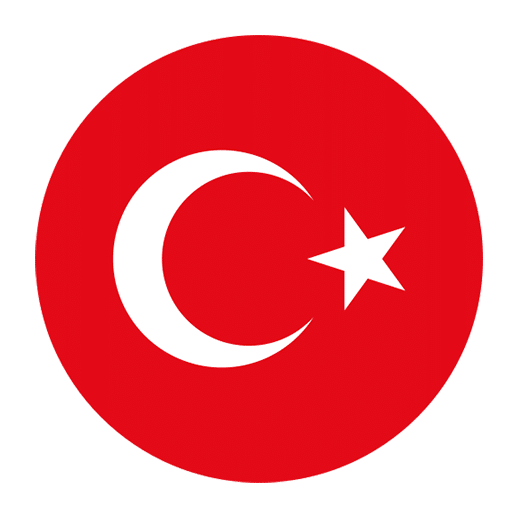When learning Turkish, one of the most intriguing aspects is the way the language handles adjectives and nouns, especially when it comes to describing colors. If you’ve ever come across the words “renk” and “renkli,” you might have wondered about their specific meanings and uses. This article aims to demystify these two terms and help you understand how to use them correctly in various contexts.
Understanding “Renk”: The Basic Concept of Color
The word “renk” in Turkish simply means color. It is a noun and is used much like the English word “color.” For example, if you want to talk about a specific color, you would use “renk.”
For example:
– What is your favorite color? – En sevdiğin renk ne?
– The color of the sky is blue. – Gökyüzünün rengi mavidir.
In these sentences, “renk” serves the same purpose as “color” does in English, acting as a noun to describe the hue or shade of an object or phenomenon.
Forms and Usage of “Renk”
Just like many other Turkish nouns, “renk” can also be modified to show possession, plurality, and other grammatical features.
For example:
– My favorite color – En sevdiğim renk
– Colors – Renkler
– The colors of the rainbow – Gökkuşağının renkleri
In these examples, you can see how “renk” changes to fit different grammatical contexts, much like how English nouns change form to indicate possession or plurality.
Understanding “Renkli”: Adding the Concept of Colorfulness
On the other hand, “renkli” is an adjective that means colorful. It describes something that has multiple colors or is full of color. In English, “colorful” is used to describe things that stand out because of their vivid or varied colors, and “renkli” serves the same function in Turkish.
For example:
– The house is colorful. – Ev renkli.
– She wore a colorful dress. – Renkli bir elbise giydi.
Here, “renkli” is modifying the nouns “ev” (house) and “elbis” (dress) to describe their vivid or varied colors.
Forms and Usage of “Renkli”
“Renkli” does not change form as much as “renk” because it is an adjective, but it can still be used in various grammatical contexts.
For example:
– Colorful houses – Renkli evler
– The colorful flowers – Renkli çiçekler
Notice how “renkli” remains the same while the nouns it describes change to fit their grammatical roles. This is typical for adjectives in Turkish.
Practical Examples: When to Use “Renk” vs “Renkli”
To solidify your understanding, let’s look at some practical examples where the correct usage of “renk” and “renkli” is essential.
Example 1:
– What is the color of the wall? – Duvarın rengi nedir?
– The wall is colorful. – Duvar renkli.
In this case, “renk” is used to ask about the specific color of the wall, while “renkli” is used to describe the wall’s colorful nature.
Example 2:
– The colors of the painting are vibrant. – Tabloyun renkleri canlı.
– It is a colorful painting. – Renkli bir tablo.
Here, “renkleri” (the colors) is used to talk about the specific hues in the painting, while “renkli” is used to describe the overall colorful quality of the painting.
Example 3:
– I like colors. – Renkleri seviyorum.
– I like colorful things. – Renkli şeyleri seviyorum.
In this example, “renkleri” (colors) refers to the various hues themselves, while “renkli” (colorful) refers to objects that have these hues.
Common Mistakes and How to Avoid Them
When learning the difference between “renk” and “renkli,” it’s common to mix them up because they are closely related in meaning but serve different grammatical functions. Here are some common mistakes and tips on how to avoid them:
1. **Using “renk” as an adjective:**
– Incorrect: The sky is color. – Gökyüzü renk.
– Correct: The sky is colorful. – Gökyüzü renkli.
2. **Using “renkli” as a noun:**
– Incorrect: What is your favorite colorful? – En sevdiğin renkli nedir?
– Correct: What is your favorite color? – En sevdiğin renk nedir?
3. **Confusing possession with description:**
– Incorrect: The color’s wall is blue. – Rengin duvarı mavidir.
– Correct: The color of the wall is blue. – Duvarın rengi mavidir.
Tips for Mastering “Renk” and “Renkli”
To master the use of “renk” and “renkli,” consider the following tips:
1. **Practice with Real-Life Examples:**
– Try to incorporate both words into your daily conversations. For instance, describe objects around you using “renk” and “renkli.”
– Example: The book cover is colorful. – Kitabın kapağı renkli.
2. **Use Visual Aids:**
– Create flashcards with images of colorful objects. Label them with sentences using “renk” and “renkli.”
– Example: A card with a rainbow labeled “Gökkuşağı renkli.”
3. **Engage in Language Exchange:**
– Speak with native Turkish speakers and ask them to correct your usage of “renk” and “renkli.”
– Example: Ask, “Did I use ‘renk’ correctly in this sentence?”
4. **Read and Listen to Turkish Media:**
– Pay attention to how “renk” and “renkli” are used in Turkish books, articles, and media.
– Example: Read a children’s book that describes various colorful objects.
5. **Write Practice Sentences:**
– Write sentences or short paragraphs using both “renk” and “renkli” to describe scenes or objects.
– Example: The garden has many flowers. The flowers are colorful. – Bahçede birçok çiçek var. Çiçekler renkli.
Conclusion
Understanding the difference between “renk” and “renkli” is crucial for anyone learning Turkish. While “renk” refers to color as a noun, “renkli” describes something that is colorful as an adjective. By practicing their uses in different contexts, you can gain confidence and accuracy in your Turkish language skills. Remember, the key to mastering these terms is consistent practice and exposure to authentic Turkish language materials. Happy learning!

